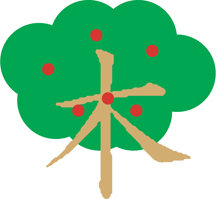SIGNIFIERS
It should be mentioned that there are moments, when we read, when all we see are words. What we are looking at when we read are words, made up of letterforms, but we are trained to see past them—to look at what the words and letterforms point toward. Words are like arrows—they are something, and they also point toward something.

***
Beckett remarked, of James Joyce’s Finnegans Wake, “it is not written at all. It is not to be read—or rather it is not only to be read. It is to be looked at and listened to. His writing is not about something, it is that something itself.”
Words seem transparent to us because of their structure and purpose (they are signifiers) but also because the practice of reading is habitual. We have seen the “arrow” enough that we look only in the direction indicated.

***
Though there are, in fact, languages that contain pictorial representations of the signified: pictograms; hieroglyphics. In these language systems, the signifier is not arbitrary—the sign shares visual characteristics with its referent. It is a picture of the thing it refers to.
When I see the Chinese character that indicates “tree,” for example, I notice the shape of the character, and this shape encourages me to picture a certain kind of tree—of a certain thickness and shape. Similarly, when I see the Chinese character for “forest,” the configuration of characters puts me in mind of a certain size of wood—a copse, perhaps. I am responding to the character as a picture.

(But this is only because I do not speak Chinese.)

Chinese readers may not “see” the pictures that are constituent parts of their language, because reading Chinese, for them, is habitual (or so I’m told).
A point of interest: The books that make the act of reading feel foreign and nonhabitual are not the books in which imaging is most difficult. Or, that is, when we read difficult books, with nontraditional narrative structures, we still imagine that we see.
***

Tristram Shandy
It is not only the letterforms that are like arrows when we read…

…and paragraphs and chapters are arrows. Whole novels, plays, and stories are arrows.

Oedipus, the play, to me, points downward.
To read is: to look through; to look past…though also, to look, myopically, hopefully, toward…
There is very little looking at.
***
 ТЕЛЕГРАМ
ТЕЛЕГРАМ Книжный Вестник
Книжный Вестник Поиск книг
Поиск книг Любовные романы
Любовные романы Саморазвитие
Саморазвитие Детективы
Детективы Фантастика
Фантастика Классика
Классика ВКОНТАКТЕ
ВКОНТАКТЕ